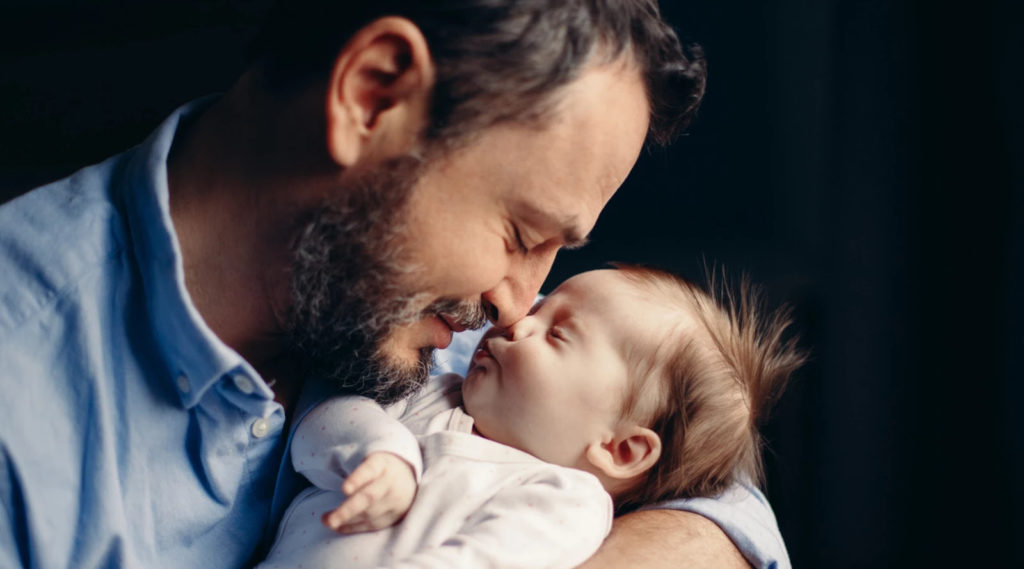Bond with Newborn After Surrogacy: Expert Tips for Lasting Connection


Welcoming a newborn into your life through surrogacy is a moment of immense joy. However, for many intended parents, bonding with the baby can be a unique journey, especially because they did not carry the child themselves. Establishing a strong connection with your newborn is essential and can be achieved through various bonding techniques that foster closeness, emotional security, and trust.
In this post, we’ll explore how intended parents can bond with their newborn after surrogacy, along with helpful tips and techniques to create a loving and nurturing environment for your baby.
Get in touch for a Free Surrogacy Consultancy:
📲 +91-8800481100 ( WhatsApp, Line, Viber)


Why is Bonding Important After Surrogacy?
Bonding with your newborn builds emotional connections and lays the foundation for a strong parent-child relationship. For intended parents, it’s natural to feel a little anxious about bonding after surrogacy, but there are several ways to nurture that bond effectively.
A strong bond provides:
- Emotional security for the baby.
- A sense of trust and comfort.
- Healthy attachment development.
- A foundation for cognitive and emotional growth.
1. Skin-to-skin contact
One of the most effective ways to bond with your newborn is through skin-to-skin contact, often referred to as “kangaroo care.” This method involves placing your baby directly on your chest, allowing them to feel your warmth, hear your heartbeat, and smell your scent. Skin-to-skin contact helps regulate the baby’s body temperature and heart rate while promoting attachment.
Benefits of Skin-to-Skin Contact:
- Stimulates the baby’s physical and emotional development.
- Boosts parent-baby bonding by increasing oxytocin levels, often called the “love hormone.”
- Reduces stress and promotes calmness in both the baby and parent.
2. Breastfeeding or Bottle Feeding
For mothers who choose to induce lactation, breastfeeding can be a powerful way to bond with the baby. Breastfeeding naturally releases oxytocin, which strengthens the emotional connection between you and your baby. Even if breastfeeding isn’t an option, bottle feeding offers an equally meaningful opportunity to bond. Holding your baby close during feedings, maintaining eye contact, and talking softly to them while feeding can enhance the bonding experience.
Tips for Feeding Bonding:
- Whether breastfeeding or bottle feeding, create a quiet, intimate environment.
- Maintain eye contact and speak gently to your baby.
- Take turns feeding with your partner to allow both parents to bond with the baby.
3. Hold and Cuddle Your Baby Frequently
Physical touch is crucial for newborns, and holding your baby regularly helps them feel safe and loved. Swaddling and cuddling your newborn will not only comfort them but also increase the bond between you and your child.
How to Create a Safe Cuddling Routine:
- Hold your baby during wakeful moments, not just when they are crying.
- Use baby carriers to keep your newborn close to you throughout the day.
- Cuddle them before and after naps to reinforce their sense of security.
4. Respond to Your Baby’s Cues
Newborns communicate through non-verbal cues such as crying, body language, and facial expressions. Learning to respond to these cues will help you understand your baby’s needs and build trust. This will create a strong parent-child bond as your baby realizes they can rely on you to fulfill their needs.
Examples of Baby Cues:
- Crying when hungry, tired, or needing comfort.
- Smiling or cooing when they are content and happy.
- Reaching for you when they want to be held.
5. Engage in Gentle Talking and Singing
Your newborn may not understand words yet, but they can recognize your voice. Gently talking or singing to your baby is an effective bonding technique. It helps to soothe them, creates a sense of familiarity, and enhances their language development over time.
How to Engage with Your Baby Verbally:
- Speak softly and reassuringly, using their name often.
- Sing lullabies during nap times or bedtime.
- Narrate simple daily activities like feeding or diaper changes to expose your baby to language.
6. Create a Routine
Establishing a daily routine creates a sense of predictability for your newborn, making them feel more secure. A consistent schedule for feeding, naps, and playtime helps your baby adapt to their new environment and builds trust in you as their parent.
Building a Bonding Routine:
- Set a regular time for feeding and naps.
- Incorporate bonding activities like bath time, bedtime stories, or gentle rocking into your routine.
- Use rituals such as morning cuddles or evening lullabies to create emotional connections.
7. Involve Both Parents in Bonding
Bonding isn’t limited to just one parent. It’s essential for both partners to spend time with the newborn. If there are two intended parents, take turns engaging in feeding, diaper changes, and cuddling. Equal participation in your baby’s care will allow both parents to form strong connections with their child.
Tips for Equal Involvement:
- Divide baby care responsibilities equally between both parents.
- Ensure both parents spend skin-to-skin time with the baby.
- Rotate night feedings and diaper changes so both parents can bond.
8. Understand That Bonding Takes Time
For many parents, bonding is immediate, but for others, it may take time. Be patient with yourself, and understand that building a bond with your newborn is a process. Even if you don’t feel an instant connection, consistent nurturing and care will naturally develop a strong bond over time.
How to Be Patient with the Bonding Process:
- Don’t be hard on yourself if bonding doesn’t happen immediately.
- Keep engaging in nurturing activities like cuddling, feeding, and talking.
- Focus on your baby’s needs and your love will grow as your bond strengthens.
9. Attend Post-Birth Counseling if Needed
For some intended parents, the surrogacy process may bring up emotions or concerns about bonding with their baby. If you feel overwhelmed or unsure about bonding, consider attending post-birth counseling. Therapists can offer guidance and strategies to help you navigate the emotional aspects of becoming a parent after surrogacy.
10. Use the Surrogate’s Bonding as a Transition
In some cases, surrogates and intended parents work together during the initial moments after birth to help the newborn transition. The surrogate may spend a little time with the baby immediately after birth, but the focus shifts to the intended parents. This helps ease the transition and reassures the baby that they are in loving hands.
Bonding with the baby when it is in the surrogate’s womb
The best time to bond with your baby is when it is in the womb – be it yours or a surrogate. Mostly the intended parents are under the impression that they will not be able to bond with the baby if they use a surrogate.
But this is not the case. You can bond with the baby while the baby is in the uterus. You may also attend all medical appointments with the surrogate mother. Take images of the ultrasound, or capture the voices.
And if you’re not doing this stuff, that doesn’t mean that you can’t bond with your kid. The first skin-to-skin contact experience is wonderful when you carry an infant. Once the baby is born, he/she will be immediately handed over to the expected parents where the bond starts to form.
One of the great ways to bond with your baby is by using belly buds. Use belly buds to record your messages. You can have favorite songs or even read a baby’s children’s book; daily exposure to your voice will make it a familiar sound once it’s born.
Surrogate and intended parents’ relationship
There are so many different forms of safe and stable surrogate relationships, and this depends on the needs of both the surrogate and the parents. It will take some time to build a relationship with your intended parents but it will eventually feel sincere and real. Throughout the method, the best ties are naturally established.
Many surrogates with their intended parents have been like relatives, while others have not stayed in touch. Often a strong intended parent and surrogate relationship can be established instantly and the intended parents and surrogate are intended to become very close.
It’s recommended that your baby and surrogate mother have a couple of minutes together at some point after birth. In doing so, the baby can confirm his or her senses, particularly smell. Be sure to speak to your surrogate about what this could look like; speak about what she’s happy with and check in with her after delivery as well.
Read more about surrogacy: Bond With a Newborn After Surrogacy
Cheapest countries for surrogacy?
Conclusion
Bonding with your newborn after surrogacy is an extraordinary journey, and it’s essential to approach it with patience, love, and care. By using techniques like skin-to-skin contact, feeding, cuddling, and engaging with your baby verbally, you’ll develop a deep connection that will last a lifetime. Remember that bonding takes time, and every moment you spend nurturing your newborn helps build a strong foundation for your relationship.
Whether you’re a first-time parent or expanding your family through surrogacy, these bonding tips and techniques will help you create a meaningful, loving connection with your newborn.
If you’d like to learn more about IVF, Egg Donation, or surrogacy services globally, check out the rest of our website: IVF Conceptions. We offer legally secure and affordable surrogacy consulting services for FREE.
Get in touch for a Free Surrogacy Consultancy:
📲 +91-8800481100 ( WhatsApp, Line, Viber)


FAQs for Bonding with Newborns after Surrogacy
How can parents bond with a newborn born through surrogacy?
Parents can bond with a newborn born through surrogacy by engaging in various nurturing activities. They can hold the baby, provide skin-to-skin contact, talk, sing, and make eye contact. Participating in caregiving tasks such as feeding, diaper changes, and bathing also fosters a strong bond.
What are some skin-to-skin contact techniques for bonding with a surrogate baby?
Skin-to-skin contact techniques involve placing the baby’s bare chest against the parent’s bare chest. This can be done immediately after birth and during feeding times. It helps regulate the baby’s body temperature, heart rate, and breathing, while also promoting emotional bonding.
Are there specific activities that help create an emotional connection with a newborn after surrogacy?
Yes, activities like gentle rocking, cuddling, and soothing the baby’s cries can create an emotional connection. Engaging in infant massage, making eye contact, and responding to the baby’s cues also contribute to building a strong emotional bond.
How soon can I bond with my newborn after surrogacy?
You can start bonding immediately after the baby is born through skin-to-skin contact, feeding, and holding your newborn. Early bonding is important for both the parents and the baby.
Can I bond with my baby if I didn’t carry them?
Yes! Bonding isn’t just about pregnancy. Techniques like skin-to-skin contact, feeding, and cuddling are great ways to connect with your baby, regardless of who carried them.
Can I breastfeed my baby if I didn’t carry them?
Yes, intended mothers can induce lactation through certain medical techniques. However, if this isn’t possible, bottle-feeding can also provide a great bonding experience.
How can both parents bond with the newborn?
Both parents should take an active role in baby care, including feeding, diaper changes, and skin-to-skin contact. Equal involvement ensures that both parents develop a strong bond with the baby.
Is it normal for bonding to take time after surrogacy?
Yes, bonding may take time, and it’s important to be patient with yourself. Consistent nurturing and care will help the bond grow naturally over time.


